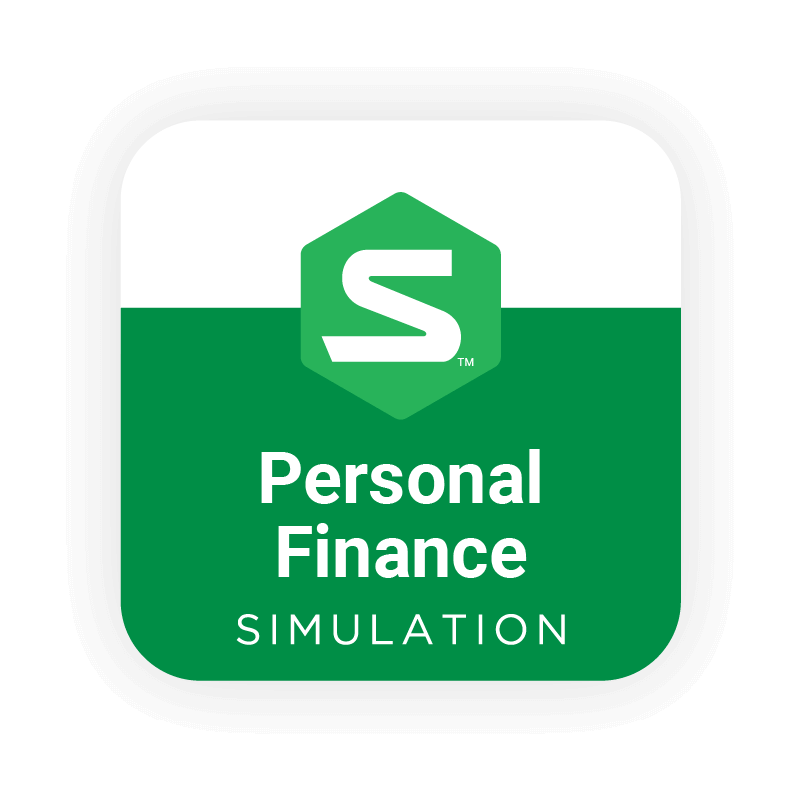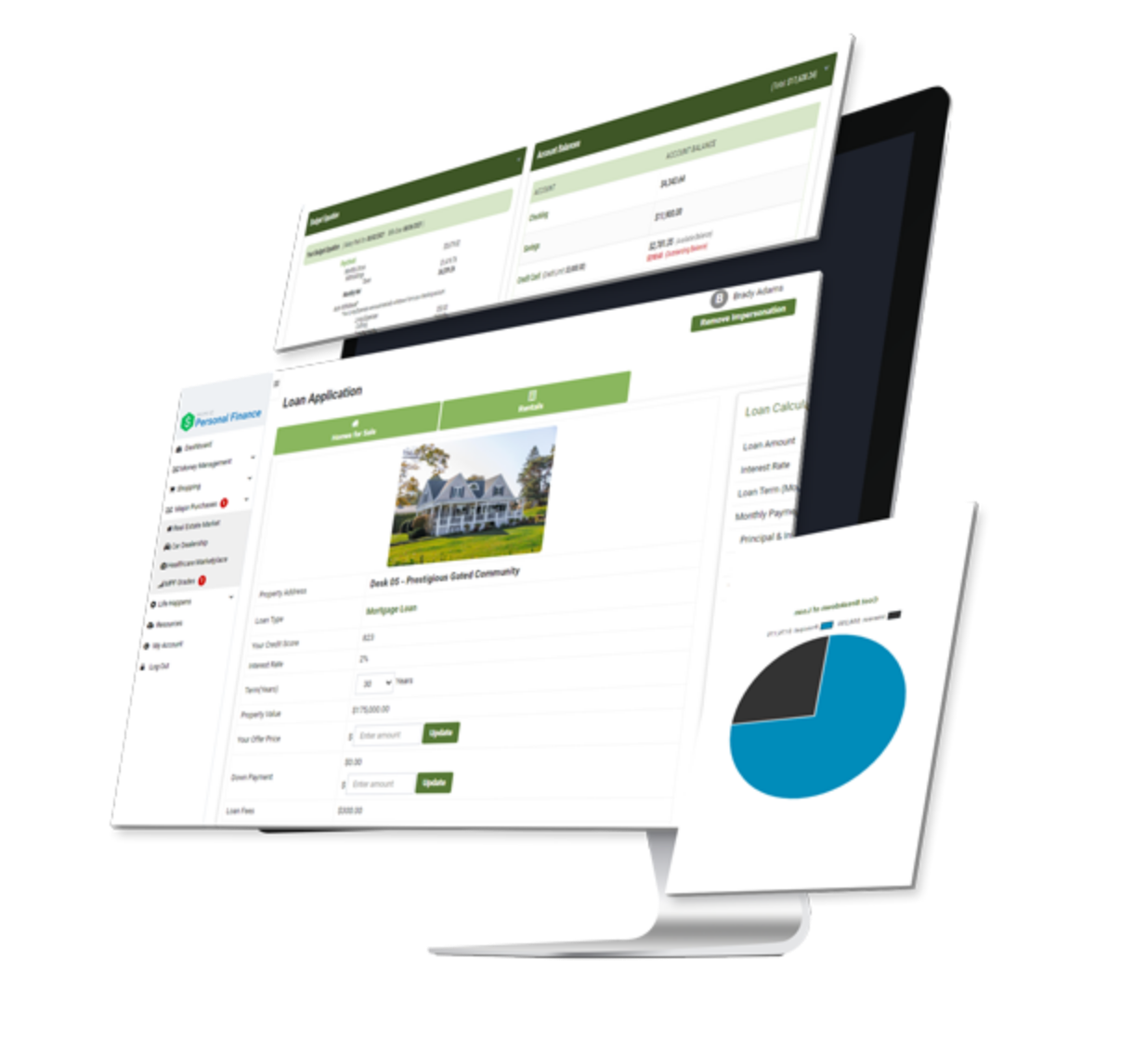
Iowa's Personal Finance Curriculum of Choice
Stukent’s Personal Finance Simulations

Stukent’s Personal Finance Simulations

Your students get hands on experience with Stukent's Personal Finance Simulation





Your students get hands-on experience with Mimic Personal Finance.




| Real World Topics Covered (21st Century Skills) | Simulation Match | Curriculum Match |
|---|---|---|
| SS-FL.9-12.13. Develop short- and long-term financial goals. | ✅ | ✅ |
| SS-FL.9-12.14. Evaluate entrepreneurship, career choices, and the effect on the standard of living. | ✅ | ✅ |
| SS-FL.9-12.15. Evaluate the effect of taxes and other factors on income. | ✅ | ✅ |
| SS-FL.9-12.16. Develop a saving & spending plan, using a financial record keeping tool. | ✅ | ✅ |
| SS-FL.9-12.17. Apply consumer skills to saving and spending decisions. | ✅ | |
| SS-FL.9-12.18. Analyze the cost and benefits of different types of credit and debt. | ✅ | ✅ |
| SS-FL.9-12.19. Summarize a borrower's rights and responsibilities. | ✅ | |
| SS-FL.9-12.20. Investigate strategies to avoid and manage debt effectively. | ✅ | ✅ |
| SS-FL.9-12.21. Evaluate short-term savings tools. | ✅ | ✅ |
| SS-FL.9-12.22. Apply investment tools to meet financial goals. | ✅ | |
| SS-FL.9-12.23. Justify reasons to use various forms of insurance. | ✅ | ✅ |
| SS-FL.9-12.24. Establish strategies for protection of personal identity and other forms of fraud. | ✅ |
| Real World Topics Covered (21st Century Skills) | Simulation Match | Curriculum Match |
|---|---|---|
| SS-FL.9-12.13. Develop short- and long-term financial goals. | ✅ | ✅ |
| SS-FL.9-12.14. Evaluate entrepreneurship, career choices, and the effect on the standard of living. | ✅ | ✅ |
| SS-FL.9-12.15. Evaluate the effect of taxes and other factors on income. | ✅ | ✅ |
| SS-FL.9-12.16. Develop a saving & spending plan, using a financial record keeping tool. | ✅ | ✅ |
| SS-FL.9-12.17. Apply consumer skills to saving and spending decisions. | ✅ | |
| SS-FL.9-12.18. Analyze the cost and benefits of different types of credit and debt. | ✅ | ✅ |
| SS-FL.9-12.19. Summarize a borrower's rights and responsibilities. | ✅ | |
| SS-FL.9-12.20. Investigate strategies to avoid and manage debt effectively. | ✅ | ✅ |
| SS-FL.9-12.21. Evaluate short-term savings tools. | ✅ | ✅ |
| SS-FL.9-12.22. Apply investment tools to meet financial goals. | ✅ | |
| SS-FL.9-12.23. Justify reasons to use various forms of insurance. | ✅ | ✅ |
| SS-FL.9-12.24. Establish strategies for protection of personal identity and other forms of fraud. | ✅ |



Students start with budgets to track and basic bills to pay. Academic performance in class determines if they earn a raise or lose income.
Students develop credit scores based on in-class behavior and simulation decisions. The scores allow them to take on liabilities and purchase assets like cars and real estate.
Students may choose to explore other sources of income such as starting a business in class, taking a second job, or investing in the stock market.
Just like the real world is full of surprises, students experience unexpected events that influence their finances.
By applying budgeting skills, students regularly purchase their Personal Finance score.


Unit 1: The RWC experience through Personal Finance Simulation
Unit 2: Money as a resource
Unit 3: Post-secondary
Unit 4: Employment
Unit 5: Managing finances
Unit 6: First major obligations
Unit 7: Insurance
Unit 8: Revolving credit
Unit 9: Personal credit
Unit 10: Taxes
Unit 11: Home ownership
Unit 12: Charitable giving
Unit 13: Investing

Brian Bean was teaching high school science when he became the victim of an elaborate Ponzi scheme. As a result, he lost everything and had to start life over at the age of 30. “I was embarrassed and thought that as an educated man, I should not have been so easily duped,” Brian says.
Brian was frustrated with the way our education system approaches the topic of personal financial literacy and decided there had to be a better way. He went back to school and got certified in banking and finance, earned a master’s degree in teaching methodology, and began developing the Personal Finance Simulation and the Real-World Classroom Teaching Model.
“The Personal Finance Simulation is based on my core belief that the greatest educational experiences in life are a direct result of our own choices,” Brian says. “Life is the greatest teacher of all, but the tuition can be expensive! My goal was to find a way to bring the real world into the classroom and give students opportunities to make some of these critical life decisions in the safe environment of the classroom.”
In 2016, Stukent’s Personal Finance Simulation was launched as a pilot program with a small group of schools in Utah and Texas. Over the next couple of years, the program expanded to more and more states. In 2019, Stukent launched the Personal Finance Simulation as a national product. Now students all over the country have the opportunity to not just learn about financial literacy but actually experience it!